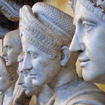Pat simple with USED TO and WOULD
Upper-Intermediate Level level
Description
Materials
Main Aims
-
To provide clarification and practice using the grammar rule of 'used to'/'would' to speak about past habits in the context of former habits/childhood habits.
Subsidiary Aims
-
To provide fluency and accuracy in speaking when using 'used to' and 'would' for past habits in the context of former habits/childhood habits.
Procedure (34-47 minutes)
- T displays (slide1) showing some past facts about T. Some are true and some are untrue. - T asks the Ss to figure out which ones are true and which are not. -Ss try to guess as T listens to them. -T tells them about himself/herself.
-T displays (slide2) asking the Ss to write three past habits about themselves ( true and untrue). -T asks Ss to discuss and figure out which ones are true and which ones are untrue in breakout rooms. -T gets feedback. -T displays (slide3) containing some examples of 'used to / would'. T asks the students to read the sentences. Then T asks the Ss to fill in the gaps. Ss fill in the gaps as T confirms and writes. -T displays (slide4) containing some examples of 'no longer' and ' not anymore'. T asks the Ss to answer the first question. T confirms the answer and reveals the answer. -T asks the Ss to read the second question. T gives some time to Ss to change the sentences. Ss say the answer as T confirms and reveals the answers.
- T displays (slide5) showing a sentence of 'used to'. -T elicits the part of speech of the words in the sentence. T confirms as he listens to Ss. -T asks some CCQs to Ss to confirm the full comprehension of Ss. -T displays another sentence, but this time using 'would' instead. -T elicits the part of speech of the words in the sentence. T confirms as he listens to Ss. -T asks some CCQs to Ss to confirm the full comprehension of the distinctions between 'would' and 'used to'. -T displays (slide6) containing some notes for the students before they are set for some practice. -T confirms that would is not usually used in negative and questions ( as it is less common). -T highlights that would is never used with non-action verbs. -T displays (slide7) containing a sentence taken from the first slide. -T asks the Ss to read it. t ask the Ss to use 'no longer'. Then T asks then to use 'not anymore'
-T displays (slide 8) showing a picture of someone in the past and in the present. Ss need to practice producing sentences using the target language correctly. -T asks Ss to discuss as much as possible with their partners in the breakout rooms using the target language. -T monitors subtly as Ss discuss. T does not interrupt unless Ss need guidance.
-T listens to the Ss's feedback after they get back from breakout rooms. T uses the fingers correction method in case s/he needed to.
-T displays the online game of 'bamboozle'. -T explains the rules of the game. T splits the class into two teams. -T starts revealing the questions and Ss answer.
-T displays (slide 11) containing a (past-present) picture. - T asks the Ss to take a look at it. Then T asks the students to discuss in pairs/groups. - T monitors Ss while they discuss in breakout rooms. -T gets feedback from Ss when they are back.

